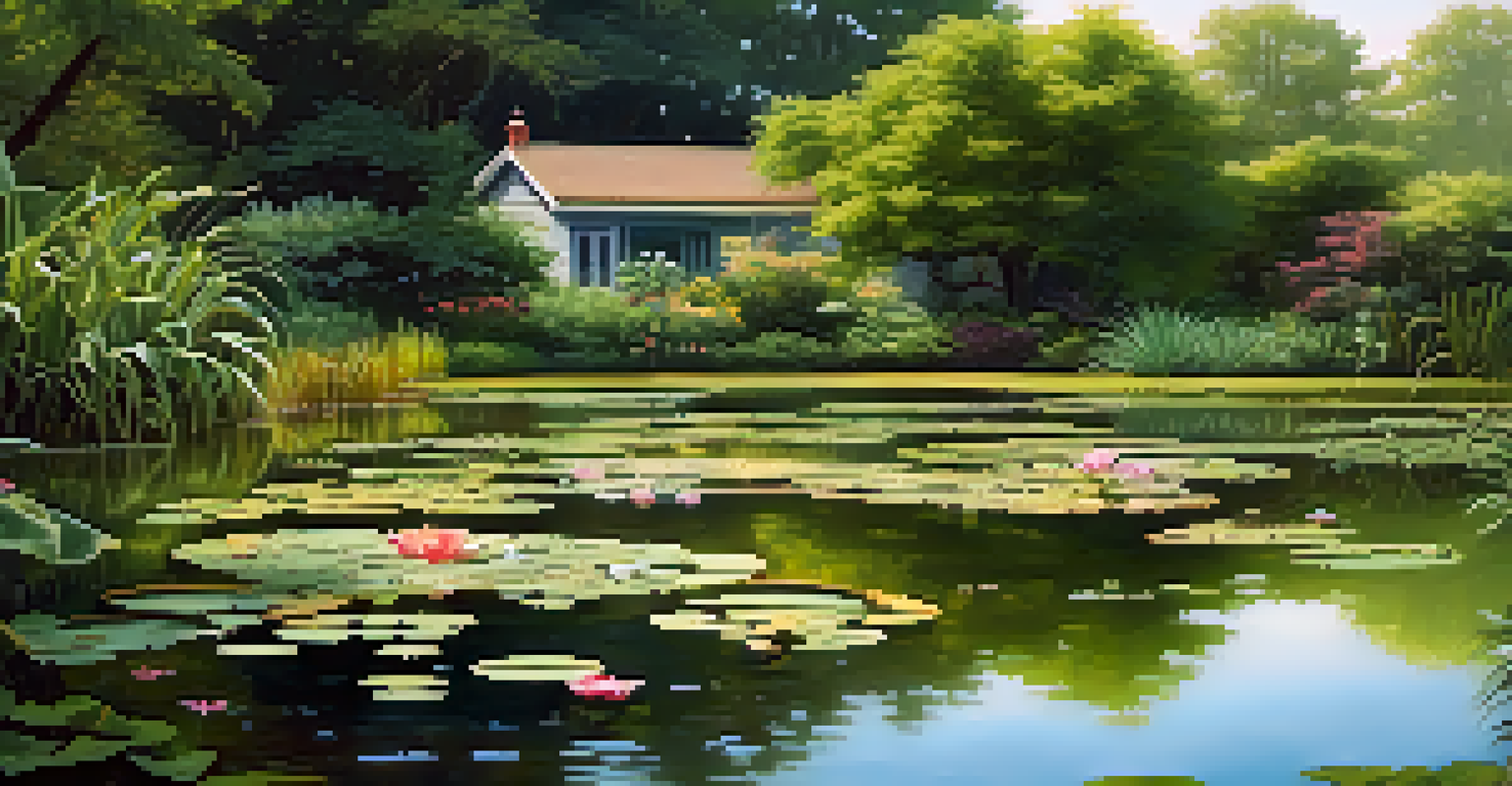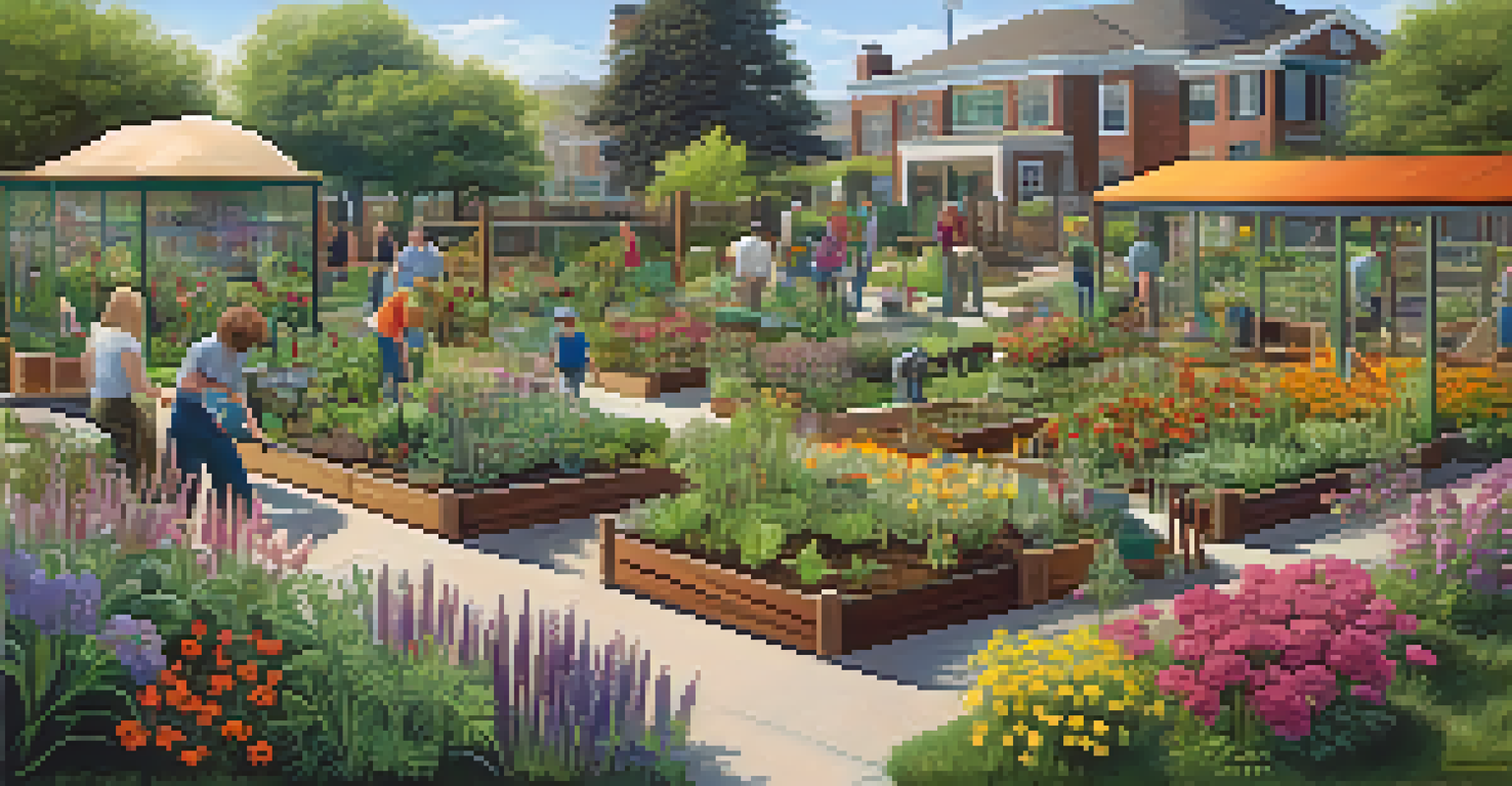The Role of Biodiversity in Sustainable Landscaping

Understanding Biodiversity in Landscaping
Biodiversity refers to the variety of life forms in an ecosystem. In landscaping, it encompasses plants, animals, and microorganisms working together. This rich diversity is vital for creating resilient and balanced environments that can thrive.
Biodiversity is the foundation of ecosystem services, and it provides us with the resources for our survival and well-being.
When we integrate diverse plant species into our landscapes, we mimic natural ecosystems, which are inherently more stable. For example, a garden filled with various flowers, shrubs, and trees can support numerous pollinators, from bees to butterflies. This not only enhances beauty but also boosts ecological health.
In essence, understanding biodiversity allows us to appreciate the interconnectedness of all living things. By fostering a landscape that celebrates this variety, we lay the groundwork for sustainable practices that benefit both our environment and our communities.
Benefits of Biodiversity in Landscaping
Biodiversity brings numerous benefits to landscaping, the most notable being enhanced resilience. A diverse plant community can withstand pests, diseases, and climate changes better than a monoculture. For instance, a diverse garden might face fewer pest outbreaks because various plants attract different beneficial insects.

Furthermore, a biodiverse landscape supports soil health. Different plants contribute unique nutrients to the soil, promoting its fertility and structure. This means less reliance on chemical fertilizers, which can be harmful to the environment.
Biodiversity Enhances Resilience
A diverse plant community is better equipped to withstand pests, diseases, and climate changes.
Additionally, biodiversity enhances the aesthetic appeal of landscapes. A mix of colors, textures, and forms creates a visually engaging environment. Whether it's a public park or a private garden, this variety draws people in and fosters a connection with nature.
Creating Biodiverse Landscapes: Key Strategies
To cultivate biodiversity in your landscaping, start by choosing native plants. Native species are adapted to local conditions, making them more resilient and easier to care for. They also provide essential habitats for local wildlife, ensuring a thriving ecosystem.
The greatest threat to our planet is the belief that someone else will save it.
Incorporate layering into your design by mixing trees, shrubs, and ground covers. This creates different habitats and microclimates, attracting a wider range of species. For example, a tree canopy offers shelter for birds, while the understory can support smaller mammals and insects.
Lastly, don’t forget to include water features like ponds or rain gardens. These not only add beauty but also create habitats for aquatic creatures and help manage stormwater. By implementing these strategies, you can transform your landscape into a biodiverse haven.
The Role of Pollinators in Biodiversity
Pollinators are a crucial component of biodiversity in landscaping. They facilitate the reproduction of many flowering plants, which in turn supports the entire ecosystem. Without them, many plants would struggle to reproduce, leading to a decline in plant diversity.
Creating pollinator-friendly landscapes can be as simple as planting a variety of flowering plants that bloom at different times throughout the year. This ensures that pollinators have a consistent food source. For example, planting lavender in the summer and asters in the fall can keep bees buzzing all season long.
Pollinators Support Ecosystem Health
Pollinators are vital for plant reproduction, and a variety of flowering plants sustains them throughout the seasons.
Moreover, avoiding pesticides and providing nesting sites can significantly boost pollinator populations. By understanding and supporting these vital creatures, we can enhance the overall health and sustainability of our landscapes.
Biodiversity and Soil Health: A Symbiotic Relationship
Soil health is deeply intertwined with biodiversity. Healthy soil teems with microorganisms, earthworms, and fungi, all of which play a role in nutrient cycling and plant health. A diverse array of plants contributes organic matter to the soil, promoting this vibrant ecosystem.
When you have a variety of plants, their roots reach different soil depths, allowing for better nutrient uptake. For instance, deep-rooted plants can access nutrients unavailable to shallow-rooted ones, creating a more balanced nutrient profile. This symbiosis enhances the overall health of your landscape.
Thus, fostering biodiversity not only improves the aesthetics of your landscaping but also nurtures the very foundation it stands on—healthy soil. This invites a cycle of growth that benefits both plants and wildlife, ultimately leading to a more sustainable environment.
The Economic Value of Biodiverse Landscapes
Investing in biodiversity can yield significant economic benefits. Landscapes rich in biodiversity can reduce maintenance costs by minimizing the need for fertilizers, pesticides, and irrigation. For example, a well-planned native plant garden often requires less water and fewer chemical inputs.
Moreover, biodiverse landscapes can enhance property values. Homes surrounded by lush, diverse gardens are often more appealing to buyers. These spaces not only provide beauty but also promote a sense of community and well-being.
Biodiversity Boosts Economic Value
Investing in biodiverse landscapes can lower maintenance costs and increase property values.
Additionally, ecotourism thrives in areas with rich biodiversity. Parks and gardens that showcase diverse flora and fauna attract visitors, boosting local economies. By valuing biodiversity, we invest in both environmental health and economic prosperity.
Challenges to Biodiversity in Landscaping
Despite its importance, promoting biodiversity in landscaping faces several challenges. Urbanization often leads to habitat loss, fragmenting ecosystems and limiting wildlife movement. This makes it increasingly difficult for native species to thrive.
Another challenge is the prevalence of invasive species, which can outcompete native plants for resources. These invaders can disrupt local ecosystems, leading to a decline in biodiversity. For example, Japanese honeysuckle can quickly take over a garden, choking out native plants.

Education and awareness are key in overcoming these challenges. By understanding the importance of biodiversity and making conscious landscaping choices, we can help protect and restore our natural environments, ensuring a sustainable future.